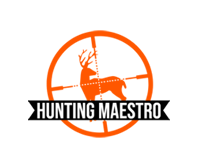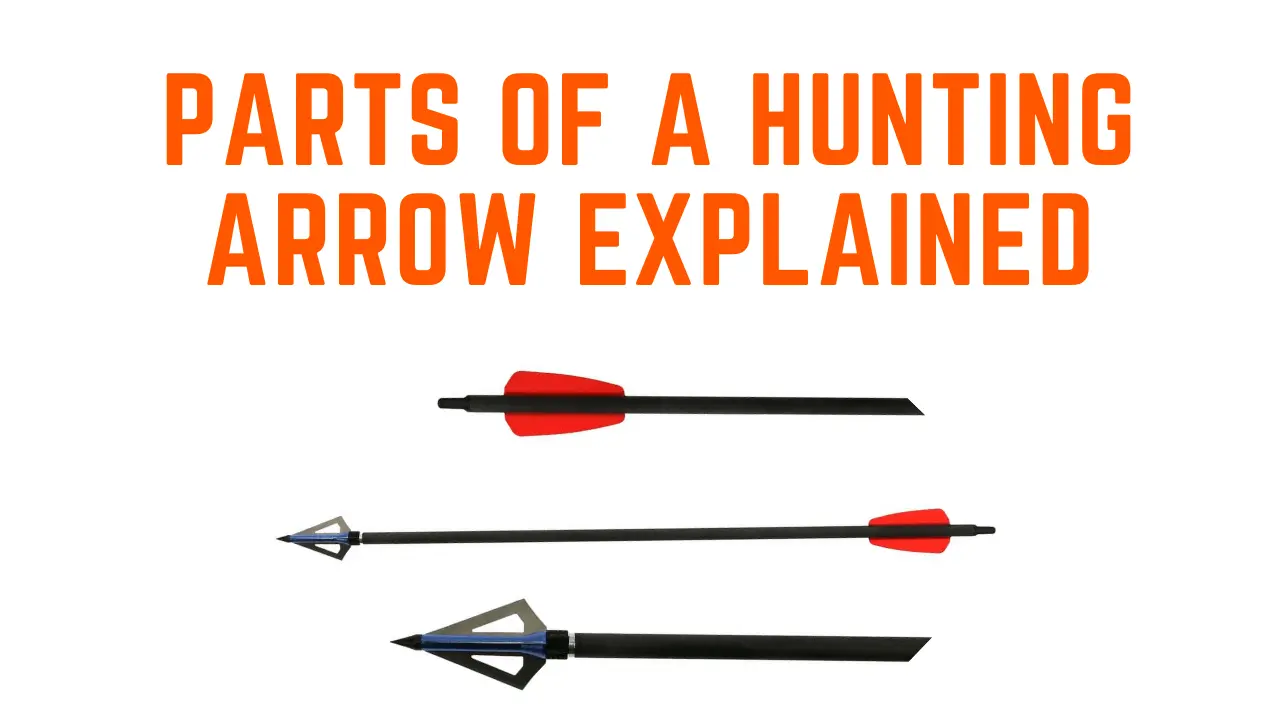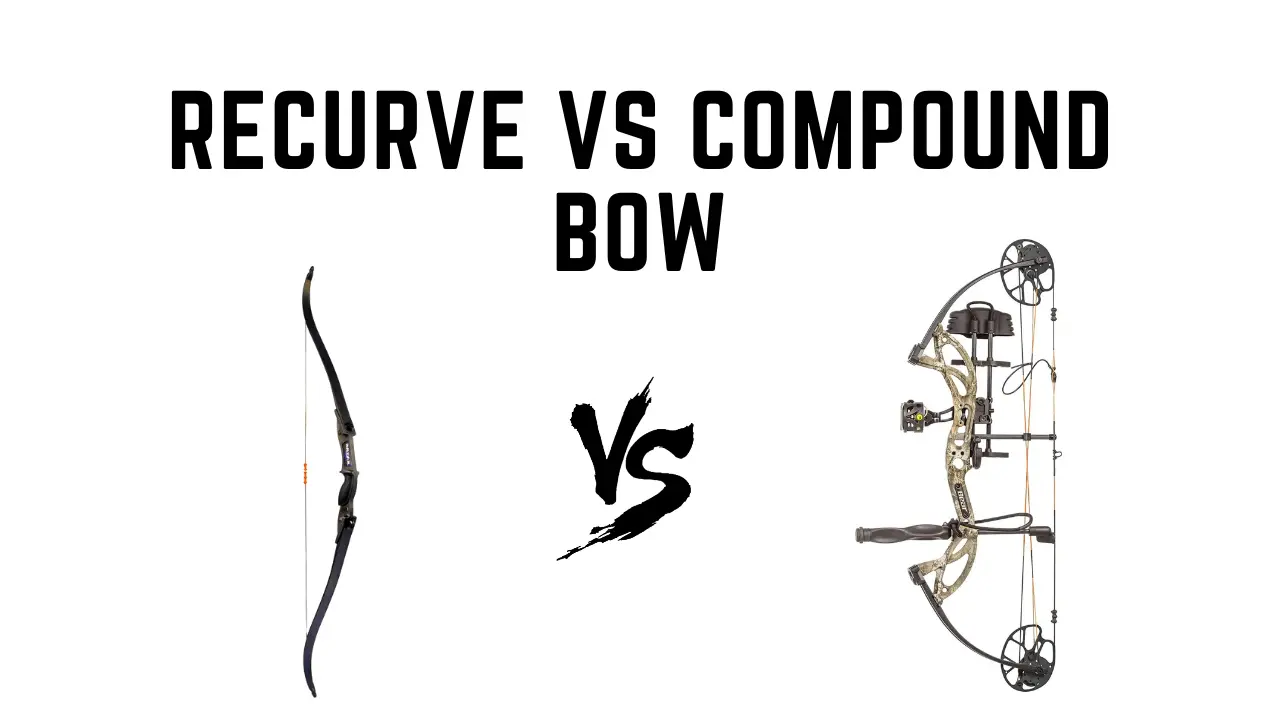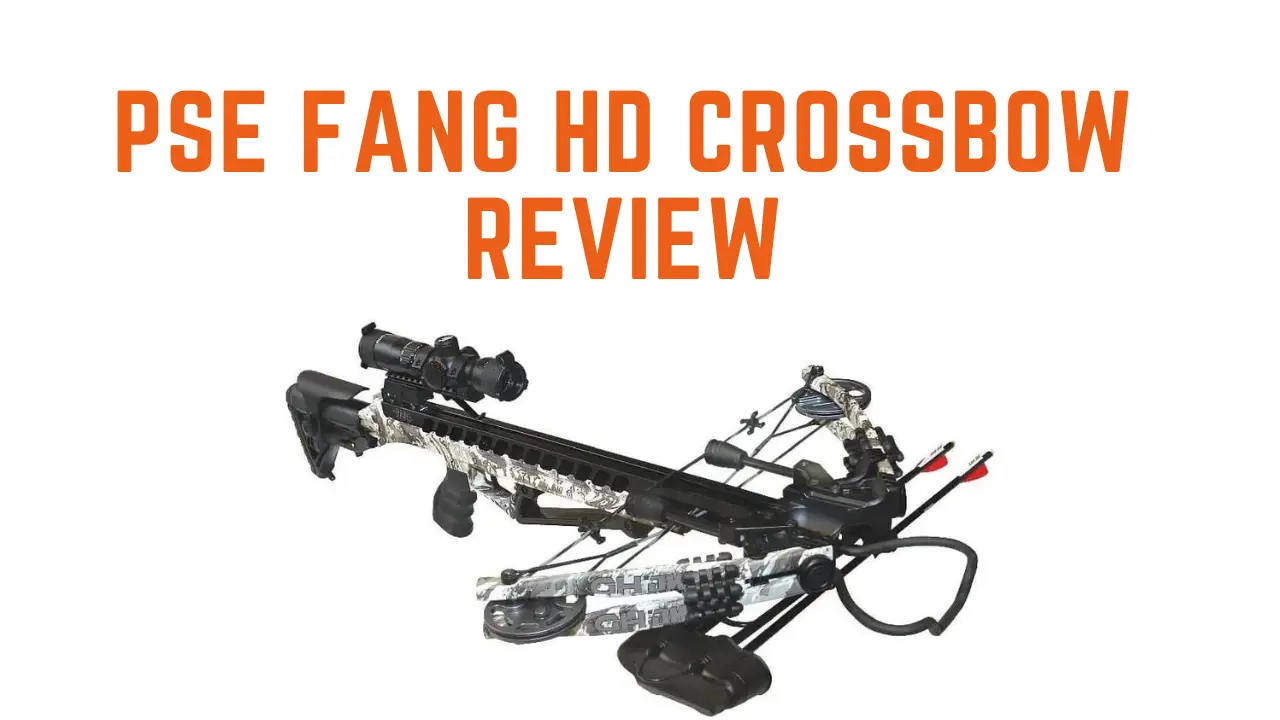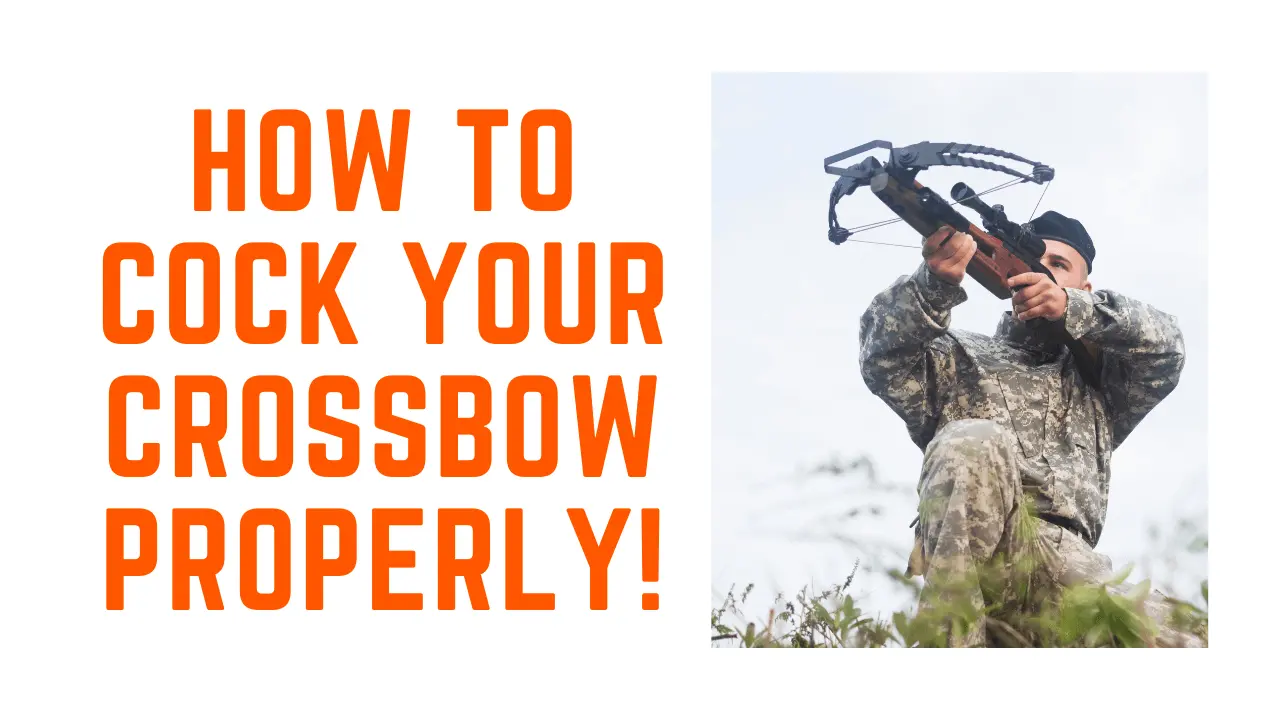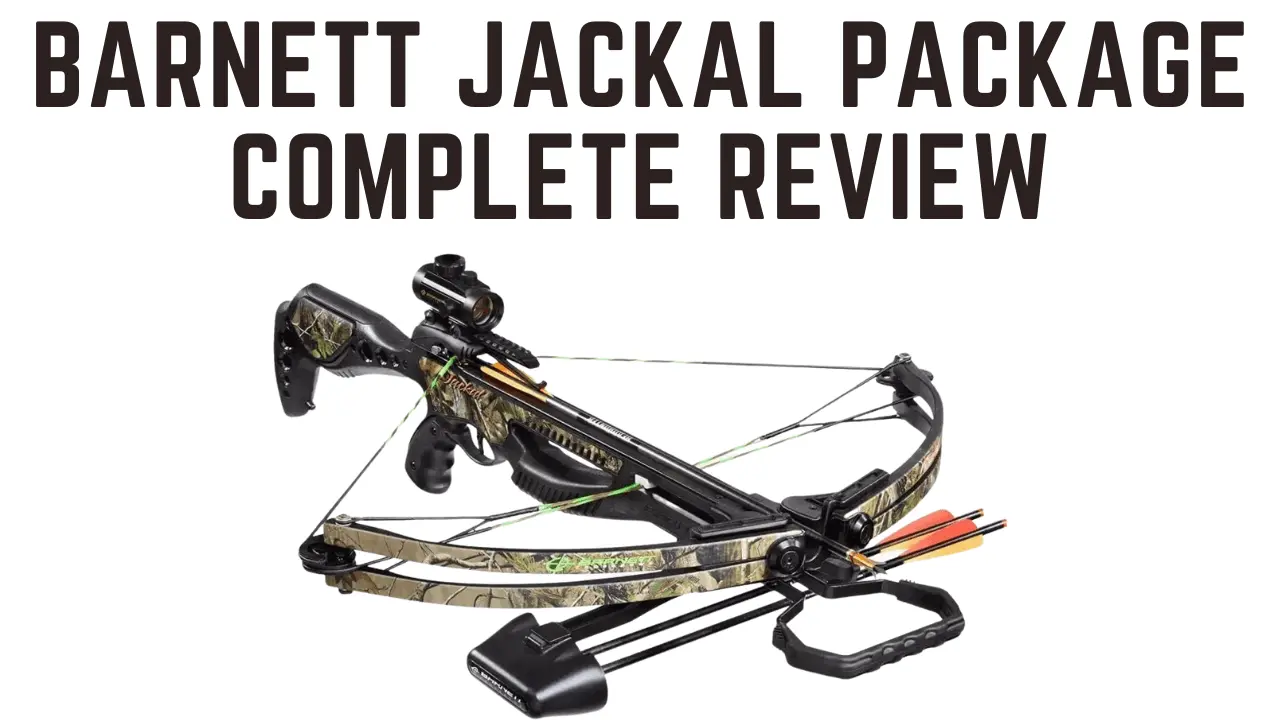Parts of an Arrow Explained in Detail
Understanding how parts of an arrow work and their role can help you become a better archer. I’ll take you through each element so that you know the important factors to consider when buying the right arrow for your needs.
We’ll look in detail at shafts, points, nocks, and fletching. Whether you’re a novice or an experienced archer, this guide has something for everyone. With our help, you’ll have everything you need to understand every aspect of the arrow anatomy and be able to make a purchase decision confidently. So let’s dive into the topic!
Parts of an Arrow Diagram
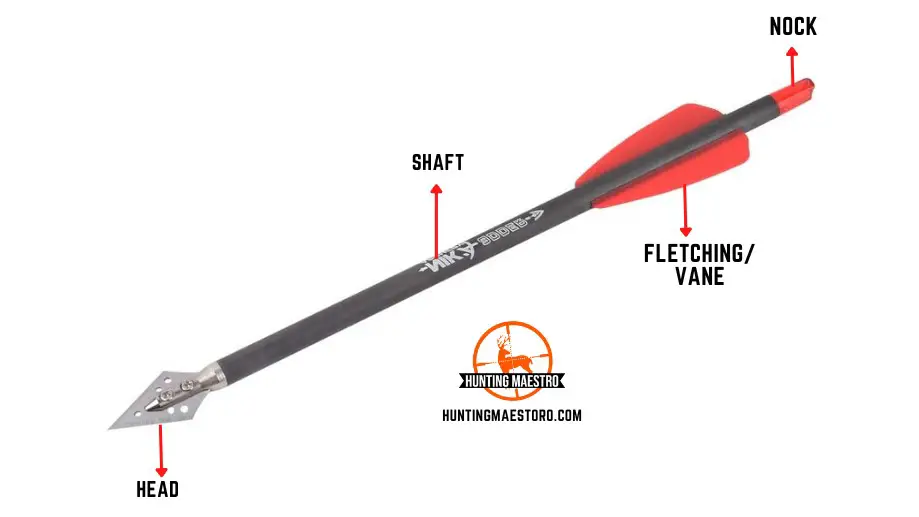
The Arrow Shaft
The arrow shaft is the main part of an arrow and, as such, requires careful craftsmanship. The archery ancestors took great pain to ensure their arrows were well-made and robust. They selected only the finest materials for their arrow shafts while paying attention to even the subtlest of details during their construction.
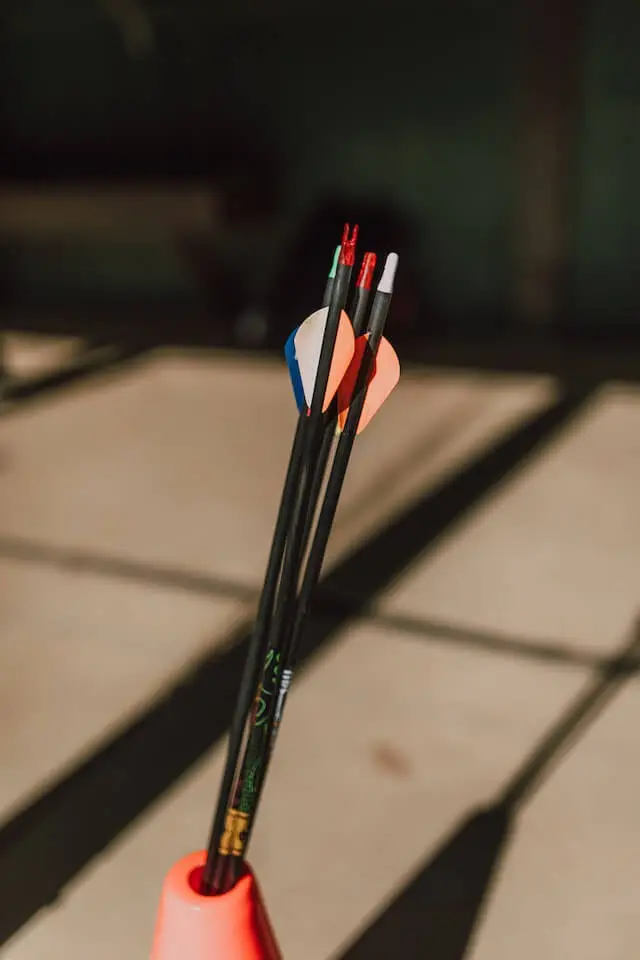
Since then, modern arrow makers have adopted those same principles to create unrivaled quality. Today’s arrow shafts can be made from various materials like wood, carbon composite, and aluminum but are all created with aerodynamic precision to ensure accuracy and maximum speed when fired.
Traditional archers still use wood arrows, but modern archers usually opt for carbon composite or aluminum shafts. Both materials are much stronger and more lightweight than wood, giving them an edge regarding speed. Whichever material you choose, ensure the arrow shaft is straight and well-made before making your purchase.
Factors To Consider When Choosing An Arrow Shaft
There are several factors to consider when selecting an arrow shaft; some of these include the following:
Material:
As discussed earlier, wood is the traditional material used for arrow shafts, but modern materials like carbon composite and aluminum are becoming increasingly popular.
Weight:
Heavier arrows tend to be more accurate but come at the cost of range, while light arrows make it easier to fire them quickly.
Straightness:
Look for arrow shafts that are perfectly straight to ensure accuracy when firing.
Durability:
You want an arrow shaft that is strong enough to withstand the impact of a bow’s draw and release.
Diameter:
A thicker shaft is more durable, while a thinner one will be easier to pull back when firing. The most common ones used widely are standard 5/16” and 9/32” shafts.
The Arrow Fletching Or Vanes
Fletching, also known as vanes, are the feathers or plastic foils found at the back of an arrow shaft, and they play a critical role in its flight. Fletching helps to provide stability and accuracy by creating drag and spin when fired, thus helping to keep the arrow on track.
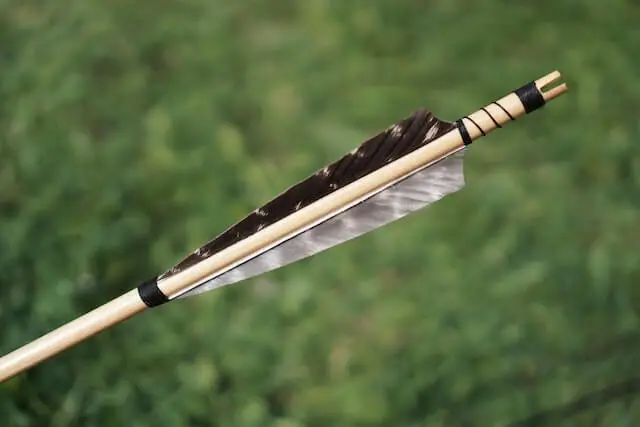
Traditionally, fletching was made from the feathers of a bird or other animal, but today they are usually made from plastic foils.
Usually, there are three or four vanes per arrow, but their number is sometimes increased for a special purpose. The length and shape of the fletching can also be customized to suit an archer’s needs.
When shopping for arrows, always check that the fletching has been attached properly and securely, as any defect could affect its flight.
Types Of Vanes
There are three main types of vanes: parabolic, shield, and blazer.
Parabolic vanes:
These are the most common type of vanes and offer good stability while in flight. Parabolic vanes can be cut at different angles to achieve various levels of drag.

Shield vanes
These shorter vanes provide greater accuracy than parabolic vanes, as they have a higher drag coefficient. They also provide more control during windy conditions.

Blazer vanes:
These are a relatively new type of vane, and they have become famous for target shooting. The design is more aerodynamic than parabolic or shield vanes, allowing them to achieve incredible speeds with less drag.

No matter which type of arrow fletching you choose, it’s important to make sure that they remain undamaged when using and storing your arrows. Damaged vanes could drastically reduce the accuracy of an arrow, so make sure to inspect them regularly.
The Nock
The nock is the plastic tip found at the end of an arrow shaft, used to secure the bowstring and transfer energy from the bowstring to the arrow. It is a vital component in archery equipment, and its shape and design can vary depending on the type of arrows being used.
A good nock fit is essential for proper arrow flight and accuracy. The nock should be snug enough to keep the bowstring in place but also loose enough that it won’t interfere with the arrow’s flight trajectory. To ensure a proper fit, most archers choose to buy pre-made nocks from an archery shop or online store.
Types of Nocks
There are several types of nocks available, including:
Press Fit Nocks:
These are the most common type of nock and are designed to snap securely onto the end of an arrow shaft. They feature a groove for the bowstring to rest in and small ridges on either side that keep it secure.
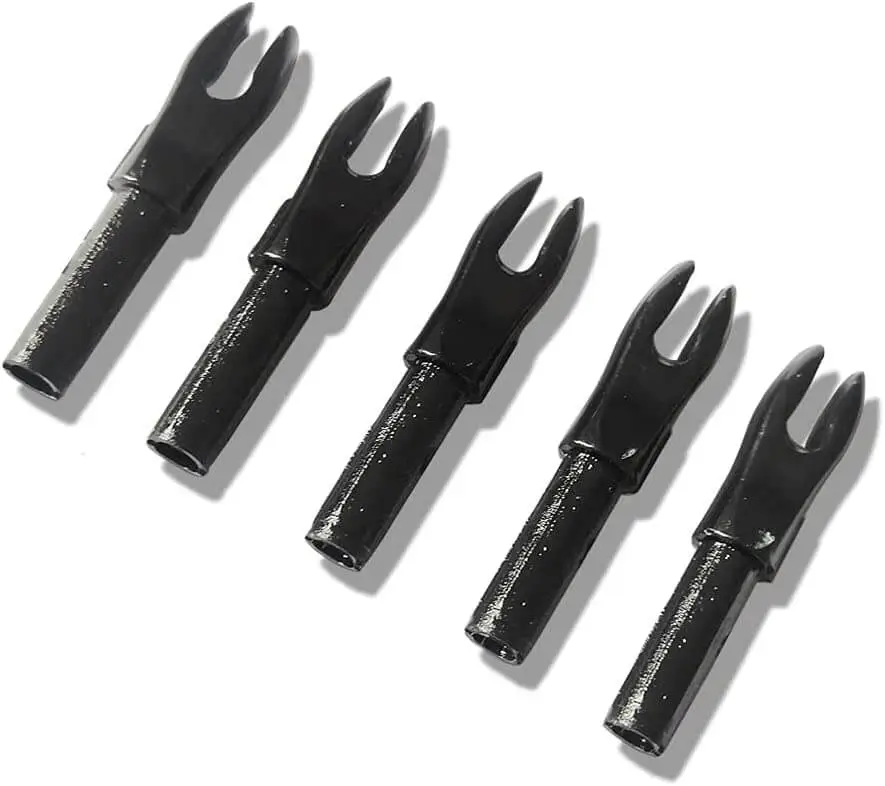
Overnocks:
These are similar to press-fit nocks but have a slightly larger groove for the bowstring. They also tend to be more durable and require less maintenance.
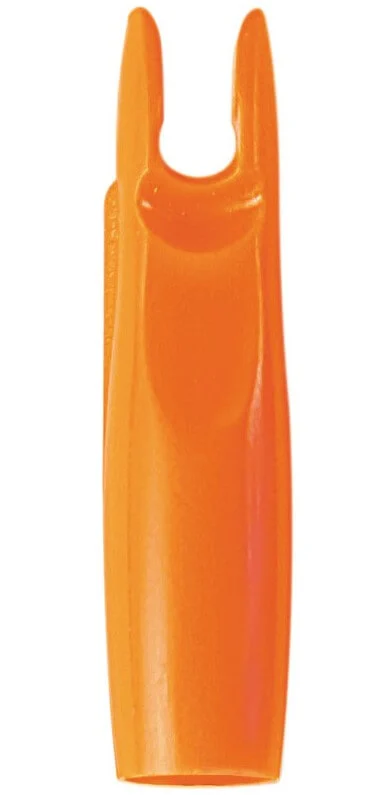
Pin nocks:
These are inserted into pre-drilled holes on the end of an arrow shaft and feature a small pin to keep the bowstring in place. They tend to be lighter than other types of nocks but can also be more prone to slipping and coming loose during flight.
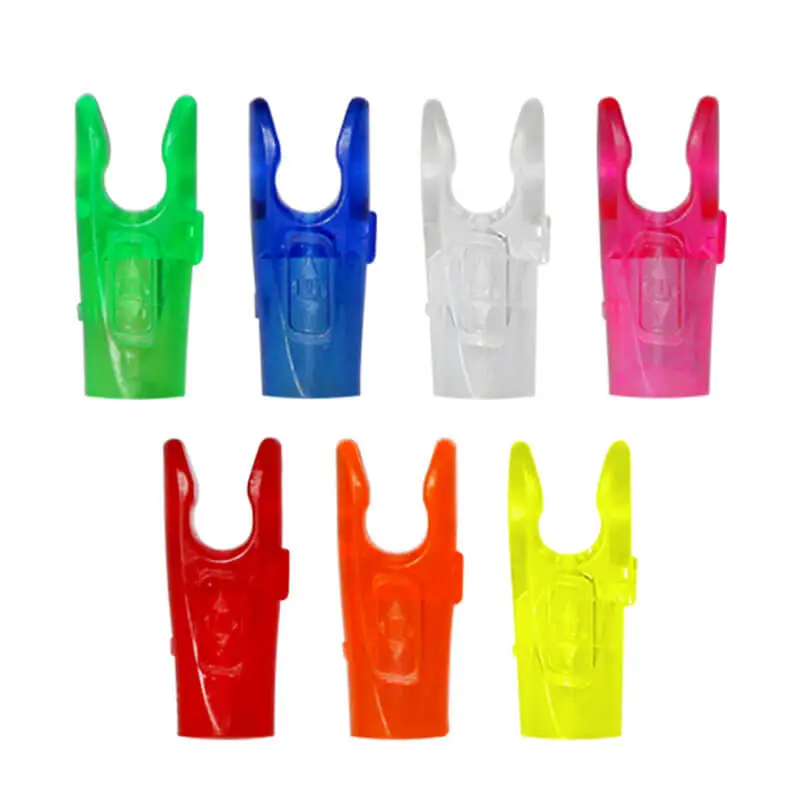
Such types of nocks are used in competitions as well. They are also suitable for hunting and target practice, depending on the type of arrow and bow being used.
Conventional nocks:
These are the most traditional type of nock and feature a small cone-shaped tip with a narrow slot for the bowstring. This tip prevents the bowstring from sliding out and allows for a slightly more significant gap between the arrow shaft and string. This can help reduce arrow drag and increase accuracy.
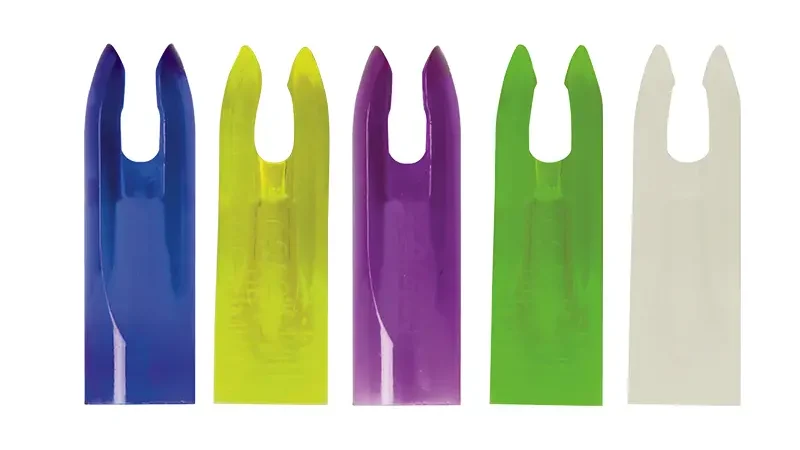
The Insert
The insert is an important piece of the arrow that helps to secure the tip and attach it firmly to the shaft. It also serves as a bearing surface between the two components, helping reduce friction when fired.
Most inserts are made from aluminum or brass, but they can be crafted out of other materials like carbon fiber or titanium. The type of insert you need will depend on the arrow shaft and tip you are using, as each material has different characteristics.
When shopping for arrows, make sure that the inserts fit properly and that they’re securely attached to both the shaft and the tip.
The Arrow Point
The arrow point determines the accuracy and effectiveness of an arrow. It is also essential for hunting or target practice, where a consistent flight and accurate impact are necessary.
Arrow points come in a variety of shapes, sizes, and materials. Each type has its own set of advantages and disadvantages, so it’s important to choose the right one for your particular needs. Common arrow points include field points, broadheads, blunt points, judo points, and fish points.
Field Points
These are the most common type of arrow points and are designed for target practice. They feature a thin, tapered tip that is designed to penetrate the target material without causing too much damage or distraction.

These points do not have any blades or cutting edges and are ideal for beginners who are just starting out. They can also be used for hunting, but the impact may not be as effective as other types of points.
Broadheads
Broadheads are designed specifically for hunting and have a much wider tip than field points. These points usually feature two or more cutting blades that can provide better penetration and larger wound channels than other types of arrow tips.
They also come in various sizes, shapes, and weights, so you can choose the one that best fits your needs. Broadheads can be expensive but are the most effective for hunting.
The two main categories of broadheads are fixed-blade broadheads and mechanical broadheads.
Fixed-Blade Broadheads
Fixed-blade broadheads are an effective and reliable choice for deer hunting and larger game like moose, buffalo, elks, etc. These broadheads have blades that remain still in place, either welded together from one piece or locked onto the ferrule with a collar.
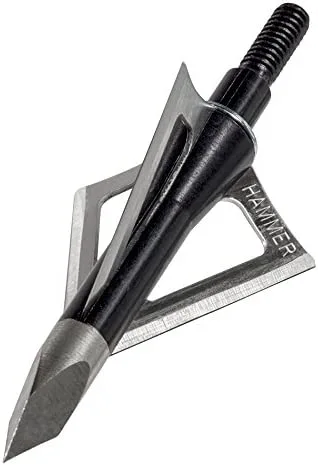
The strength of one-piece designs gives them the ability to cut through tissue and smash through rib cages without warping or damage. Removable blade designs are convenient because you can replace the blades once they’ve dulled out instead of having to sharpen them. The typical cutting diameter for a fixed-blade broadhead is 1 1/4 inch – 1 1/2 inch.
Due to their larger size and increased strength, fixed-blade broadheads are more penetrative than mechanical heads, as they offer greater force. This makes them the preferred choice for hunting game at shorter distances. However, they do require some practice to master shooting with them.
Mechanical Broadheads
Mechanical broadheads have revolutionized deer hunting due to the ease of use and increased cutting diameter. Mechanical broadheads fly close to field points because the blades are folded in on the ferrule and open on impact, so there is no need to tune them as you would with fixed-blade broadheads.
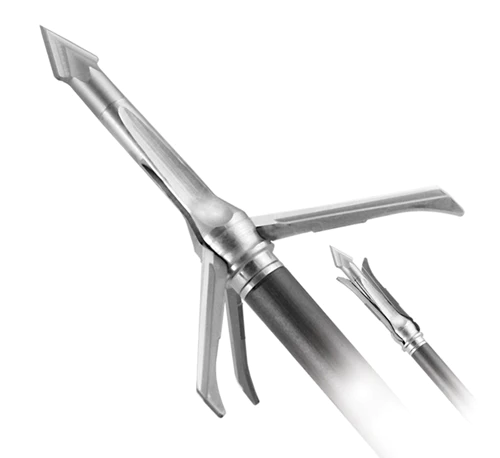
This makes it a much easier option when out hunting. Despite the reputation mechanicals have, they can be incredibly effective for hunting deer, and with some practice to get used to them, you should find success with them.
The average cutting diameter of a mechanical broadhead is 1 3/4 inch – 2 inches, which, combined with the increased accuracy, makes them an ideal choice for deer hunting.
Regardless of your preference, practicing shooting with whichever type you choose before hitting the field is important. This way, you can be sure that you will hit your target and make a humane kill. You should also test out different arrow setups to see what works best for you and check the broadhead’s sharpness before each hunt.
Blunt Points
Blunt points, sometimes referred to as “target tips,” are designed to stick in target materials without causing much damage. They feature a blunt, conical tip that is usually rounded off and may have rubber bumpers.
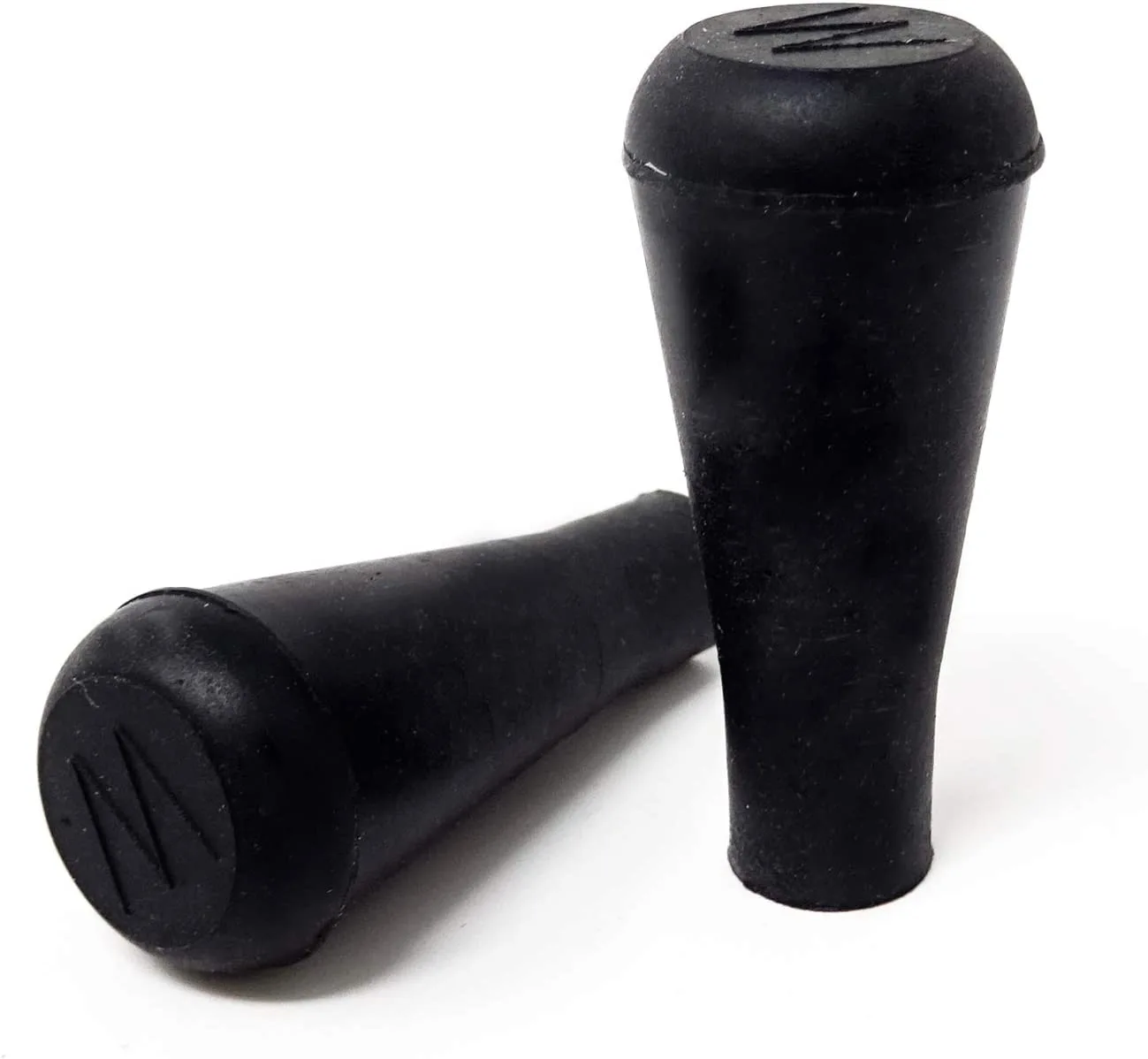
They strike and kill by shock rather than cuts. Blunt points are used mainly by target archers to practice their aim and accuracy, as well as for bow fishing, rabbit hunting, and catapulting.
They are ideal for rabbit hunting, or even for practicing indoors or on soft targets, such as foam block targets, because they leave a deep impact even when the damage appears minimal from the outside.
Judo Points
For bow hunters, judo points are a great choice when it comes to obtaining success in the field. A judo point has little wire springs attached to the arrow point, allowing them to act like little hooks when they come into contact with any surface.
This design helps to slow the arrow’s momentum and increases its accuracy without damaging it, thus making for a more successful hunt.

These typically come in 100-grain or 125-grain weights. This makes them perfect for small games such as rabbits, and they can also be used on larger prey. The hook-like design helps to keep the arrow in place once it has made contact with its target, thus ensuring a quick kill and less suffering for your animal.
Fish Points
Fish points are designed for bow fishing, as the name implies. These points feature a sharp tip with barbs that prevent the arrow from being pulled out of the fish once it has been struck.
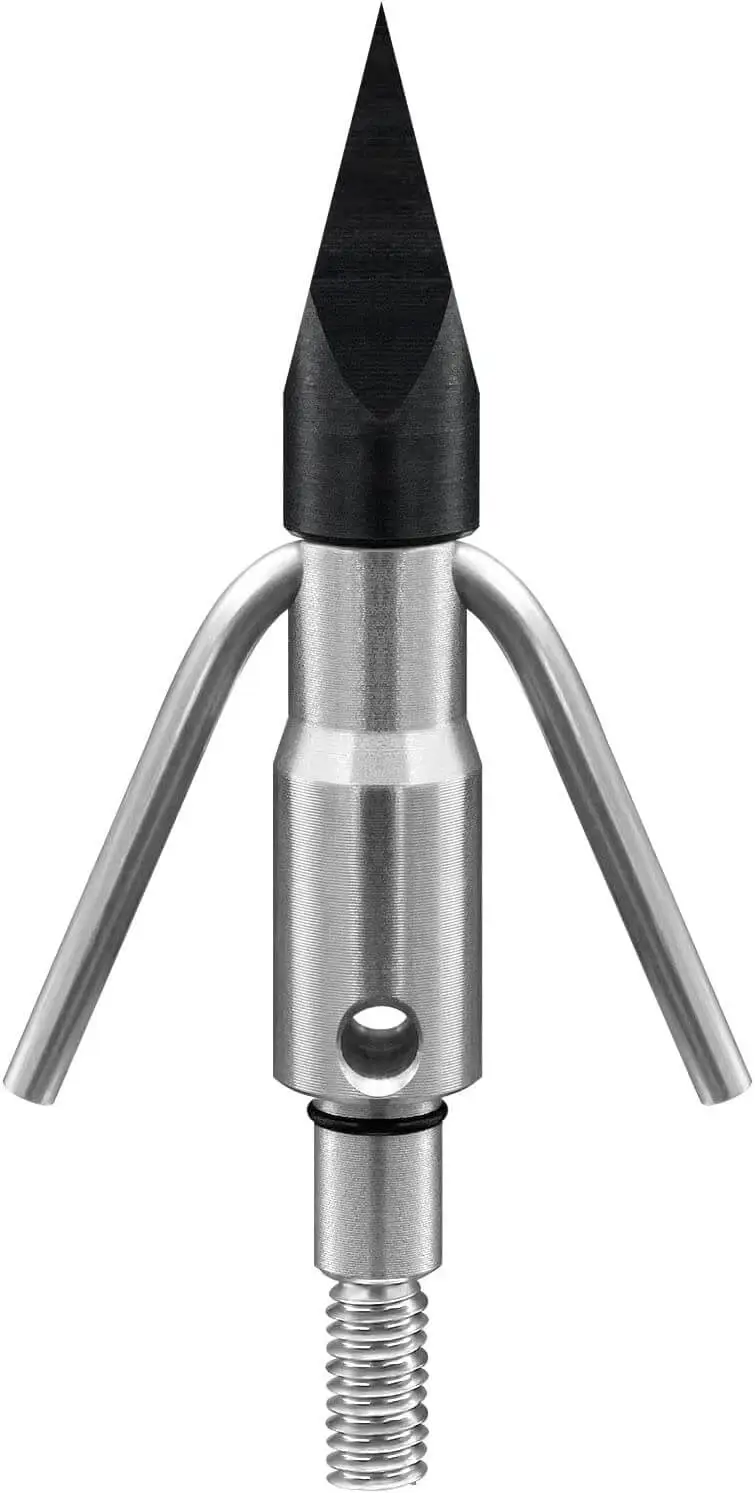
Handling fish points is easy. Fishing points are an essential piece of tackle if you’re looking to land your next trophy catch. To remove the barbs from entry-level points, unscrew them; for more advanced models, twist the tip counter-clockwise and watch as the barbs fold inwards.
Now when you snag a big one, all you have to do is give a few tugs on your arrow, and that’s it.
Final Thoughts
That’s all for now, folks; I hope my comprehensive guide of parts of an arrow has helped you gain a deep insight into the topic. All five parts of an arrow have an individual role in helping you hit your target, so make sure to check them all and find the right one for you. That way, you’ll be sure to have an excellent hunting experience!
